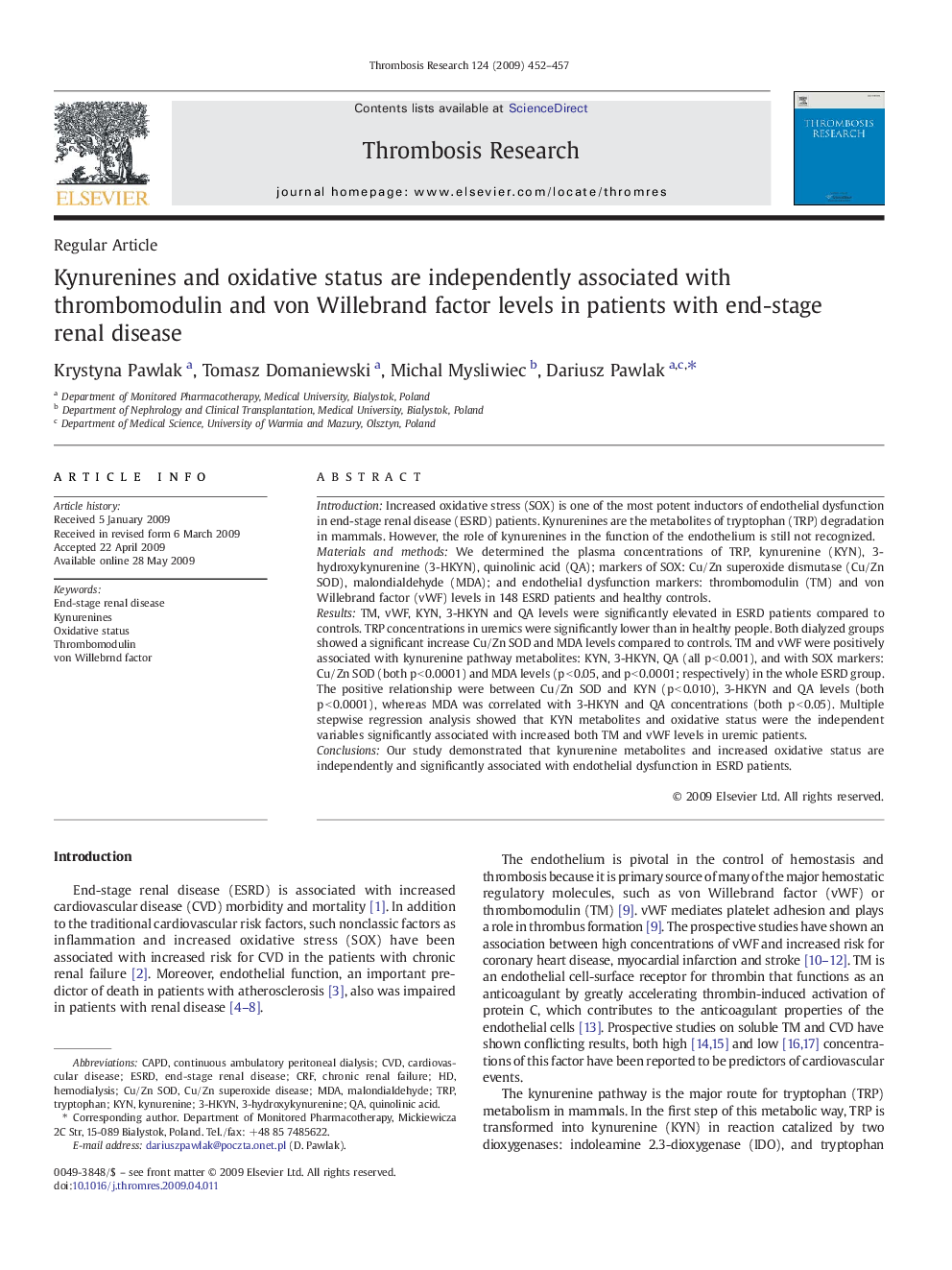| Article ID | Journal | Published Year | Pages | File Type |
|---|---|---|---|---|
| 3029593 | Thrombosis Research | 2009 | 6 Pages |
IntroductionIncreased oxidative stress (SOX) is one of the most potent inductors of endothelial dysfunction in end-stage renal disease (ESRD) patients. Kynurenines are the metabolites of tryptophan (TRP) degradation in mammals. However, the role of kynurenines in the function of the endothelium is still not recognized.Materials and methodsWe determined the plasma concentrations of TRP, kynurenine (KYN), 3-hydroxykynurenine (3-HKYN), quinolinic acid (QA); markers of SOX: Cu/Zn superoxide dismutase (Cu/Zn SOD), malondialdehyde (MDA); and endothelial dysfunction markers: thrombomodulin (TM) and von Willebrand factor (vWF) levels in 148 ESRD patients and healthy controls.ResultsTM, vWF, KYN, 3-HKYN and QA levels were significantly elevated in ESRD patients compared to controls. TRP concentrations in uremics were significantly lower than in healthy people. Both dialyzed groups showed a significant increase Cu/Zn SOD and MDA levels compared to controls. TM and vWF were positively associated with kynurenine pathway metabolites: KYN, 3-HKYN, QA (all p < 0.001), and with SOX markers: Cu/Zn SOD (both p < 0.0001) and MDA levels (p < 0.05, and p < 0.0001; respectively) in the whole ESRD group. The positive relationship were between Cu/Zn SOD and KYN (p < 0.010), 3-HKYN and QA levels (both p < 0.0001), whereas MDA was correlated with 3-HKYN and QA concentrations (both p < 0.05). Multiple stepwise regression analysis showed that KYN metabolites and oxidative status were the independent variables significantly associated with increased both TM and vWF levels in uremic patients.ConclusionsOur study demonstrated that kynurenine metabolites and increased oxidative status are independently and significantly associated with endothelial dysfunction in ESRD patients.
